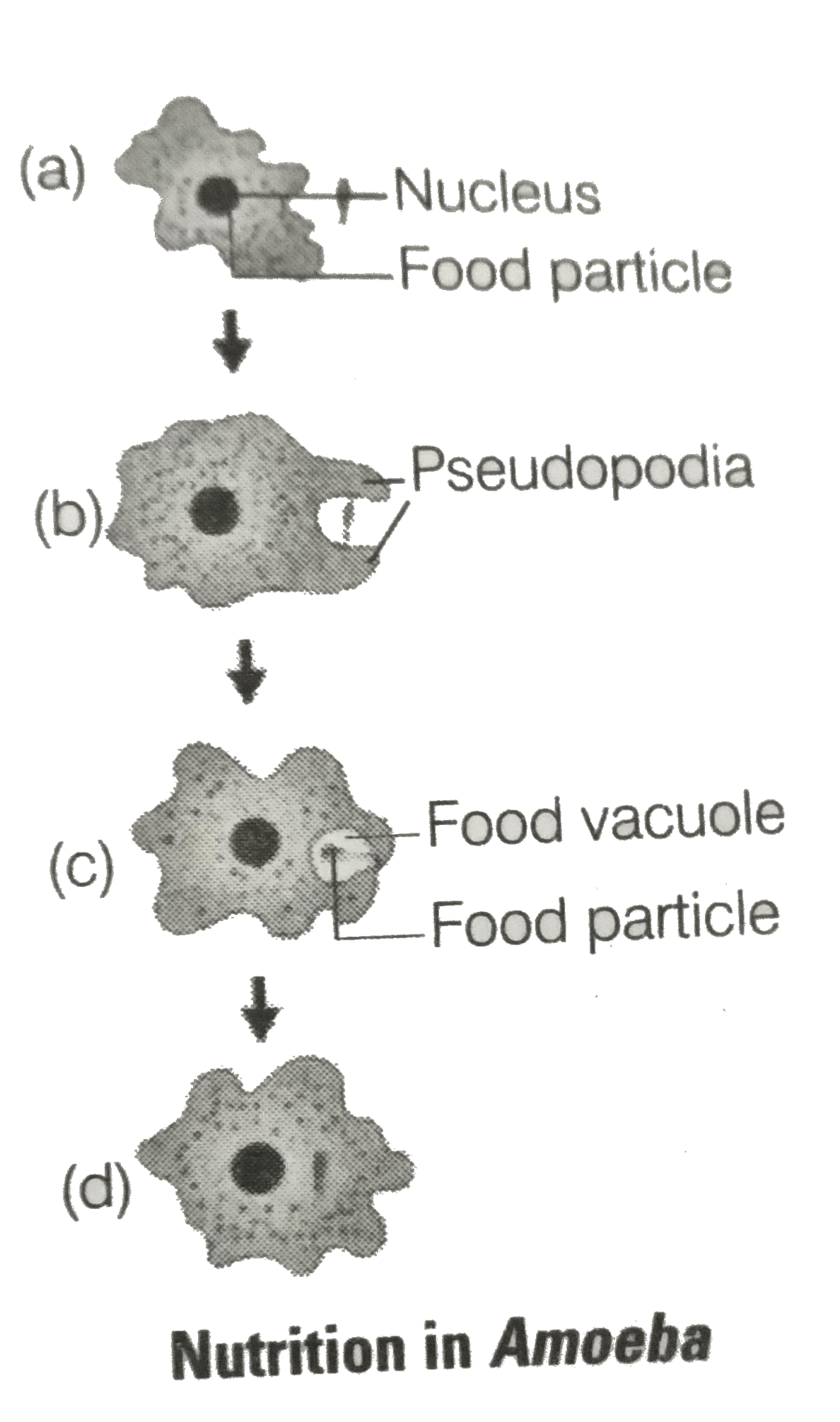Explain the mode of nutrition in Kingdom Protista.
Step-by-Step Solution:
1. Introduction to Kingdom Protista:
- Kingdom Protista consists of simple eukaryotic organisms that are neither classified as plants, animals, nor fungi. They are primarily unicellular but can also form colonies.
2. Types of Nutrition in Protista:
- Protista exhibit various modes of nutrition, which can be broadly categorized into autotrophic and heterotrophic types.
3. Autotrophic Nutrition:
- Autotrophic protists can synthesize their own food through photosynthesis. They utilize sunlight, carbon dioxide, and water, aided by photosynthetic pigments like chlorophyll.
- Examples: Diatoms and dinoflagellates.
4. Heterotrophic Nutrition:
- Heterotrophic protists cannot produce their own food and must obtain nutrients from other organisms. This can occur through several methods:
- Holozoic Nutrition: Ingesting solid food particles, similar to animals.
- Examples: Amoeba and Paramecium.
- Saprobic Nutrition: Breaking down dead organic matter by secreting enzymes into the environment, which then absorb the resulting simple nutrients.
- Example: Slime molds.
- Parasitic Nutrition: Obtaining food from a host organism, where the protist derives nutrients from the host's body.
- Example: Plasmodium, which causes malaria.
5. Mixotrophic Nutrition:
- Some protists, like Euglena, can perform both autotrophic and heterotrophic nutrition, depending on environmental conditions.
6. Symbiotic Nutrition:
- Certain protists, such as Trichonympha, live in symbiosis with other organisms (like termites), aiding in digestion and sharing the nutrients produced.
7. Pinocytosis:
- In this mode, protists like Amoeba absorb soluble organic substances and salts through a process known as pinocytosis.
Summary:
In summary, the mode of nutrition in Kingdom Protista is diverse, including autotrophic (photosynthetic), heterotrophic (holozoic, saprobic, parasitic), mixotrophic, symbiotic, and pinocytosis. Each mode reflects the adaptability of these organisms to their environments.
- Kingdom Protista consists of simple eukaryotic organisms that are neither classified as plants, animals, nor fungi. They are primarily unicellular but can also form colonies.
- Protista exhibit various modes of nutrition, which can be broadly categorized into autotrophic and heterotrophic types.
- Autotrophic protists can synthesize their own food through photosynthesis. They utilize sunlight, carbon dioxide, and water, aided by photosynthetic pigments like chlorophyll.
- Examples: Diatoms and dinoflagellates.
- Heterotrophic protists cannot produce their own food and must obtain nutrients from other organisms. This can occur through several methods:
- Holozoic Nutrition: Ingesting solid food particles, similar to animals.
- Examples: Amoeba and Paramecium.
- Saprobic Nutrition: Breaking down dead organic matter by secreting enzymes into the environment, which then absorb the resulting simple nutrients.
- Example: Slime molds.
- Parasitic Nutrition: Obtaining food from a host organism, where the protist derives nutrients from the host's body.
- Example: Plasmodium, which causes malaria.
- Some protists, like Euglena, can perform both autotrophic and heterotrophic nutrition, depending on environmental conditions.
- Certain protists, such as Trichonympha, live in symbiosis with other organisms (like termites), aiding in digestion and sharing the nutrients produced.
- In this mode, protists like Amoeba absorb soluble organic substances and salts through a process known as pinocytosis.
In summary, the mode of nutrition in Kingdom Protista is diverse, including autotrophic (photosynthetic), heterotrophic (holozoic, saprobic, parasitic), mixotrophic, symbiotic, and pinocytosis. Each mode reflects the adaptability of these organisms to their environments.
Topper's Solved these Questions
- BIOLOGICAL CLASSIFICATION FIVE-KINGDOM CLASSIFICATIONBOOK - ICSECHAPTER - BIOLOGICAL CLASSIFICATION FIVE-KINGDOM CLASSIFICATIONEXERCISE - REVIEW QUESTIONS (Short answer type questions)
16 Videos
- BIOLOGICAL CLASSIFICATIONBOOK - ICSECHAPTER - BIOLOGICAL CLASSIFICATIONEXERCISE - Ncert Exercises (Differentiate Between )
24 Videos
- BIOLOGY ISC SAMPLE QUESTION PAPER 2019BOOK - ICSECHAPTER - BIOLOGY ISC SAMPLE QUESTION PAPER 2019EXERCISE - PART-II (SECTION -C)
6 Videos
Similar Questions
Knowledge Check
The mode of nutrition in Kingdom Fungi is mainly
(a) autotrophic
(b) heterotrophic
(c) saprophytic
(d) parasiticAautotrophicBheterotrophicCsaprophyticDparasitic
Explain mode of nutrition in eubacteria.
View SolutionExplain the process of nutrition in Amoeba.

View SolutionMode of nutrition in Rhizopus is
View SolutionWhat is the mode of nutrition in Euglena ?
View SolutionExplain the kind of nutrition found in Fungi.
View SolutionExplain the mode of action of Eco RI.
View SolutionExplain nutrition in Kingdom Monera.
View Solution
